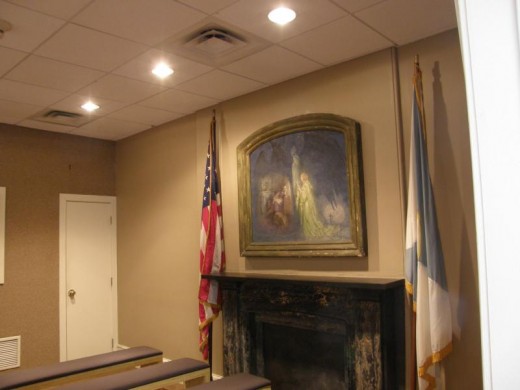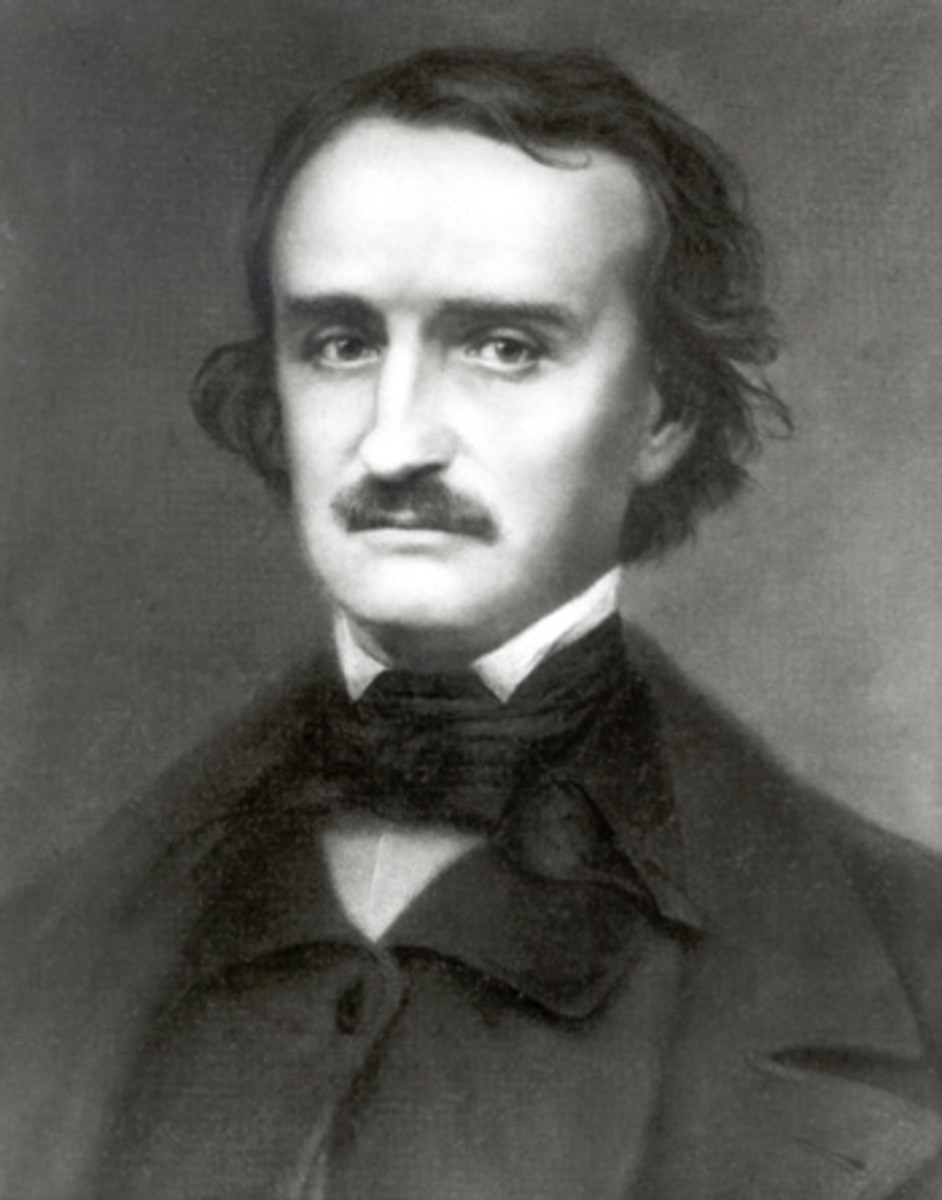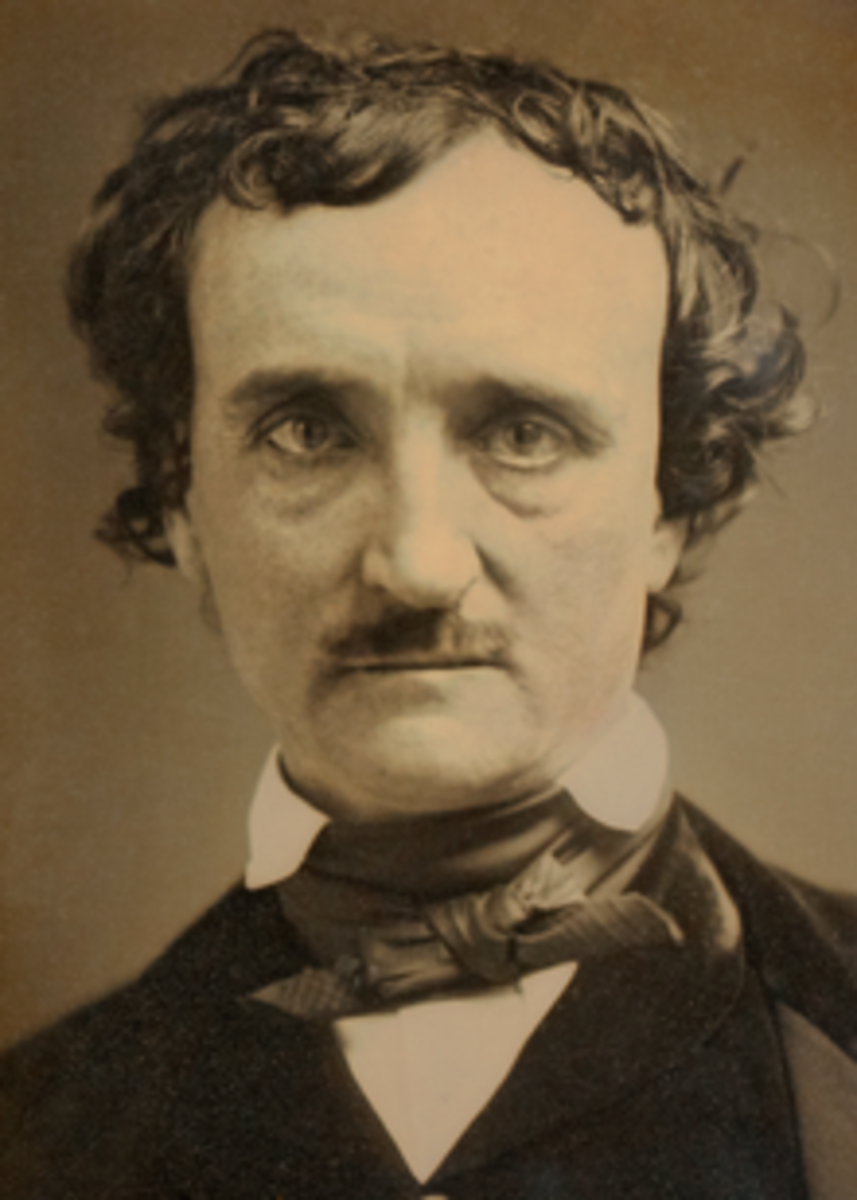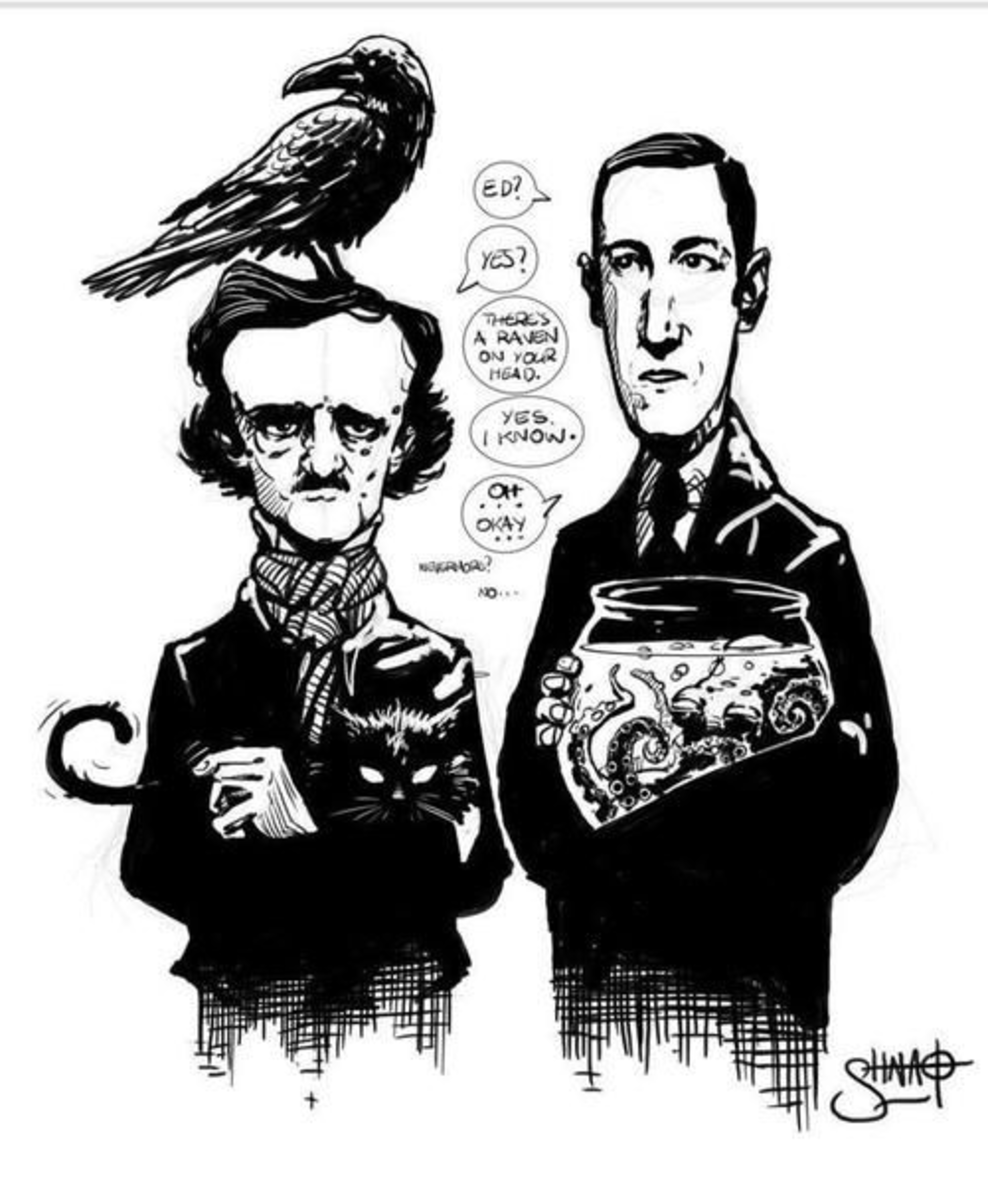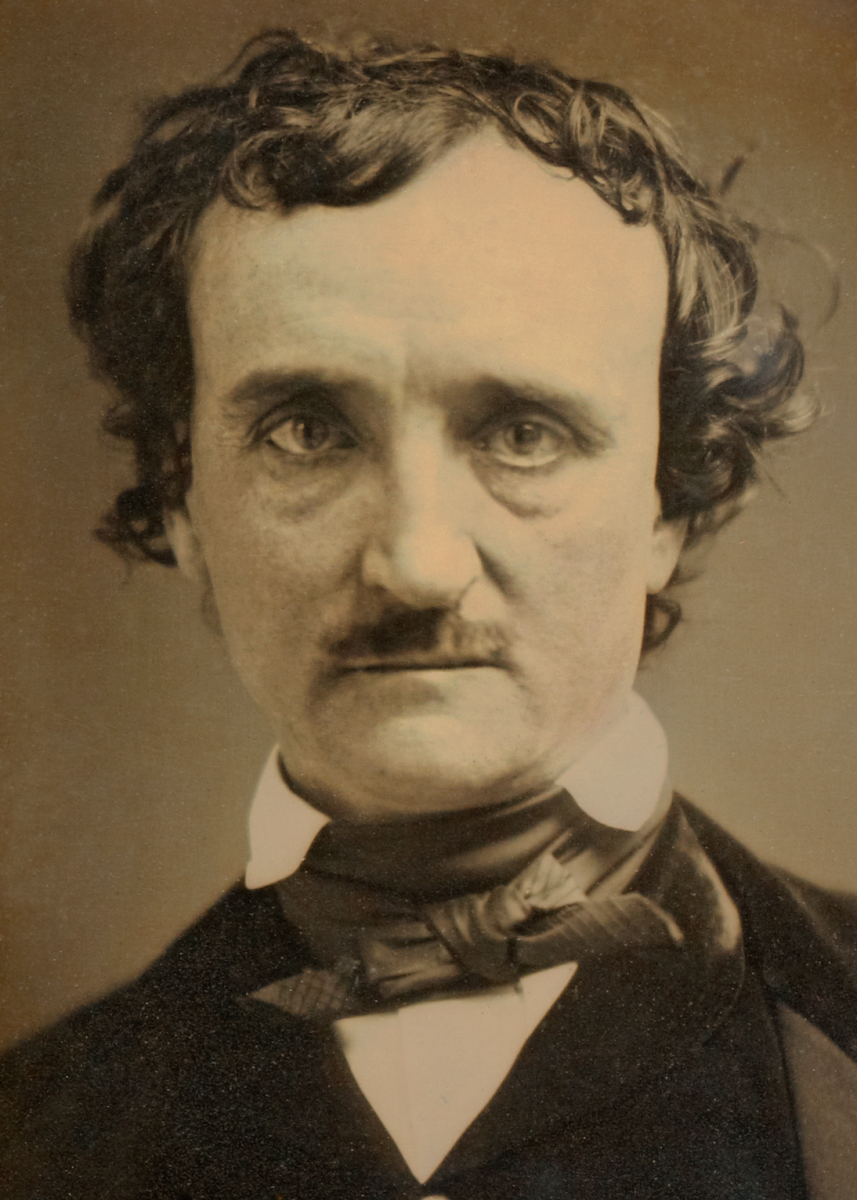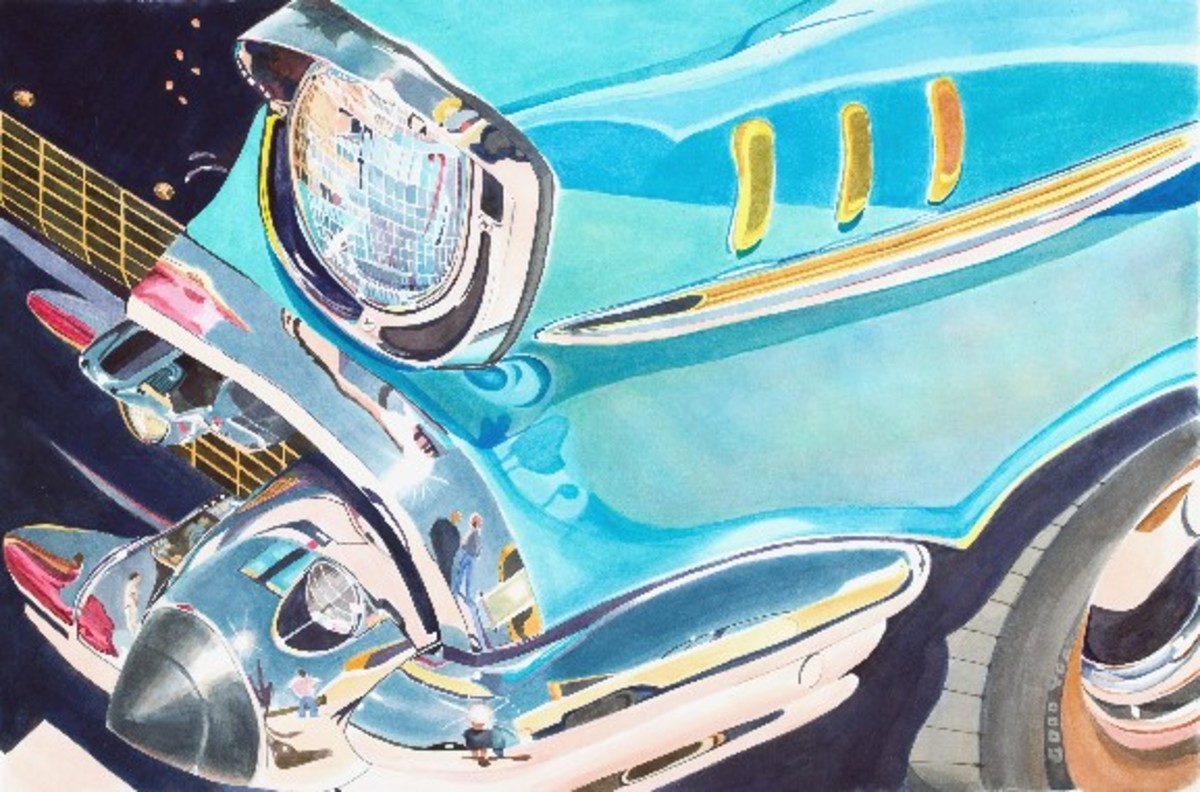Edgar Allan Poe and the Rose Covered Cottage
A Poe Grail Quest: The Rose Covered Cottage
One sunny April morning in nineteen seventy five, my friend “Bird” Mackey and I decided that we would visit the historic Edgar Allan Poe house in Philadelphia. At that time, the Philadelphia Library owned the building, and guided tours were available through the resident librarian, Mrs. Frayne, who suffered from a health problem that left her partially disabled, but still able to handle a tour for two young artists interested in the works of Poe.
When you are young, there is an attraction to Poe’s work that can best be explained as a natural curiosity for the macabre. Bird was a co-worker in the addressograph department of the Insurance Company of North America. We generally worked for five hours on Saturday mornings. I was making a bit of overtime; Bird was working for his father Joe, who was in charge of the basement operation. Our salaries were not much to speak of, but we were having the time of our lives.
The Poe house is attached to another property facing 7th Street near the intersection of Spring Garden in the Northern Liberties section of the city of Philadelphia. The actual Poe house faces Spring Garden Street but was situated on a much smaller street only big enough to run horse carts through back then.
When we knocked on the door there was no immediate answer. The side of the property had a rather large section of trimmed grass and there was a very large concrete raven attached to the small wrought iron railing that resembled an owl more than the intended identification with the Poe tale. A few moments later, the door finally opened. Mrs. Frayne brought us into the foyer and I noticed that there were several books for sale. Among these were a nice five volume set of Poe’s works from 1903 known as “The Raven Edition”. Also I noticed that the wooden floor was a deep burgundy in color, and you could understand the impression that this floor must have had on Poe when he wrote: “The Telltale Heart”,
There were also two works of art hanging between the foyer and the parlor. One is still on display in the Poe house to this day that features Poe sitting in his chair with a whirlwind of imaginative figures related to his stories, and the ghostly figure of “Legeia” drifts by, while smoke curls up from the embers of a comfortable evening Fire .
It was the other that caught my eye. It was not a painting, but a watercolor, surrounded with white matting that had the words “The Rose Covered Cottage” written on it. It was custom framed and was meant to show the way that the Poe house must have appeared at the time Poe resided in it. The name was very appropriate. The brick cottage was literally covered with roses along the sides and there was a small garden to the right where the newer attached building that faces 7th street now exists. I was so intrigued by this image that I asked if it was for sale; as my mind was racing with figures and methods of rounding up enough cash to purchase it. Mrs. Frayne politely told me that the painting and all of the contents were the property of the Free Library of Philadelphia and absolutely were not being offered.
The donation to take the tour was small enough, and each room contained period pieces of furniture that made the place very atmospheric. Mrs. Frayne was very informed on every aspect of Poe’s life. She insisted that Poe was not a drunkard but suffered from a balance problem related to an ear infection that left him with a permanent disability. Of course, I was only nineteen years of age at the time, and unacquainted with the tendency in those days of journalists hanging out at private clubs together, like the one I visited in the nineteen eighties, “The Pen and Pencil ”. The usual fare was a menu full of professional arguments fueled by alcohol.
Our host was also acquainted with what we really wanted to know. Did any Hollywood actors ever visit? She told us a delightful story about the day Vincent Price showed up at the door and made the tour as a gesture of gratitude to Poe. If any actor ever owed something to an author, Vincent Price was surely the man! “He actually came to rub the doorknob”, she said. “It is supposed to be good luck to rub that brass knob on the way out.” Mrs. Frayne obviously was a master of her craft as well!
Now you would ordinarily think that this is probably the grand summation of all things “Poe”-etic. But by the time the nineteen eighties had rolled around, the Poe house was no longer the property of the city. The Federal government decided that the house was a National Historic site and all the charm of period furniture was removed to an unknown disposition, the empty rooms were then whitewashed, and the only remaining original item was the large painting of Poe by the fireplace. Several federal park service officers were delegated for touring, and Mrs. Frayne had either died or was moved to a care facility. I returned as an adult in nineteen eighty with my wife and took a tour with a federal park service officer. The place was shocking to say the least, every room a disaster from what was there originally. The only advantage was that the exterior of the building had been restored, a fence installed and a large new Raven statue with spread wings would be lighted at night in such a manner as to produce a giant shadow on the house. The park service knew their material very well. I inquired as to the whereabouts of the contents but the officers had no idea.
Now we flash forward to the later part of the decade. By this time, I was an Officer in charge of Community Relations in Central Division and I was required to attend a 40th anniversary function just down the street at the Free Library of Philadelphia. The event was to celebrate the rare book department rehabilitation, and while Eliot Shelkrot, the President of the Free Library was making a small presentation; we were served Champagne and Shrimp Cocktail. I was standing among other guests when my attention was drawn to a case that had a large Raven sitting on a branch. Mr. Shelkrot then directed the crowd to that very object.
“We owe a lot to Poe, and I like to think that his spirit is with us as we celebrate this opening of our fine rare book department on our 40th anniversary……” he continued. My mind suddenly was struck with the possibility that the President must know what happened to the objects that were in the Poe house! I was standing next to another person who made a comment to the fact that the speaker was so enamored with the overstuffed Raven you would think it was the only part of the library. I responded: “Yes, now all they need is Dashiell Hammett’s Maltese Falcon and they will have the whole set.” The stranger burst out laughing while trying to hold herself as quietly as possible.
When the opening events were settled and everyone was exploring the new facility, I approached the President and inquired about the whereabouts of the Poe house. He referred me to the Vice President of the library and she said she would look into it. I left my card to be contacted and frankly, forgot about the encounter.
About two weeks later, I received a note in my office to contact the library. They had found my painting! I was informed I could make an appointment to see the picture privately in a secure area. When I gazed upon The Rose Covered Cottage again, all the memories of that day in nineteen seventy five came rushing back in my memory. I expressed my interest in purchasing the picture after a few moments of review. I was then given the bad news. The library was not authorized to sell anything that had been donated to them. The reason was historically interesting and the following information is the best account I can relate. These are the romanticized facts as I came to know them.
The Edgar Allan Poe house was at one time owned by Mr. Richard A Gimbel. (1898-1970). Yes, the son of the same man that we all came to know as the department store competitor to John Wanamaker. Colonel Richard A. Gimbel, Poe memorabilia collector, wanted to have a painting of the house as it appeared at the time when Poe was residing in it. He hired an architectural designer and artist by the name of Henry B. McIntire in 1946 to produce the work. McIntire, (1872-1963), member of the Historical Society of Pennsylvania, flourished in the art world from the 1930s through the 1950s, and was known for his ability in producing excellent architectural renderings and this watercolor, The Rose Covered Cottage, was the result. Colonel Gimbel probably donated the entire estate to the Free Library of Philadelphia at some point. I like to believe that he left it to the city in his will, but after the Girard estate and latter day Barnes foundation will- breaking on behalf of the city, my opinion of wills being followed to the letter has changed.
The quest had lasted almost as long as Mr.Gutman and Joel Cairo had been in pursuit of the Maltese Falcon, and I had experienced the same results. However, the librarian gave me a name on a business card. She told me that although they could not sell the original, a copy could be made that would resemble the original in every way! Apparently they employ photographers to take professional pictures for the library as a part of their preservation methods. Of course, I hired the photographer immediately and sent her a letter explaining the history of my quest. The photographer, who turned out to be one of the most beautiful women I have ever met, personally delivered the copy to my office. She said she just had to meet the person who wrote that letter!
The result of all of this is that for approximately ninety dollars, I now had a very legitimate copy of the Poe house in my own living quarters. The scene depicts Poe and his bride, Virginia as well as the mother-in-law, Maria Clemm, outside, enjoying the sunshine amid the flowers in the small garden. The dirt bound avenue of Spring Garden Street marked the northern border of the city in that period. I do know that while Poe lived in that house, he wrote “The Tell-Tale Heart” (that bloody floor), and probably “The Black Cat”. The property was well suited for both. I cannot affirm that he produced “The Raven”, which is the subject of some competitive claims in other cities such as Richmond, New York, and Baltimore. I believe all of that is not important. We, as Americans, all share in the great inheritance of our uniquely American authors. As time passes may this heritage always remain in our hearts, even if they are “Tell-Tale”.
The Rose Covered Cottage
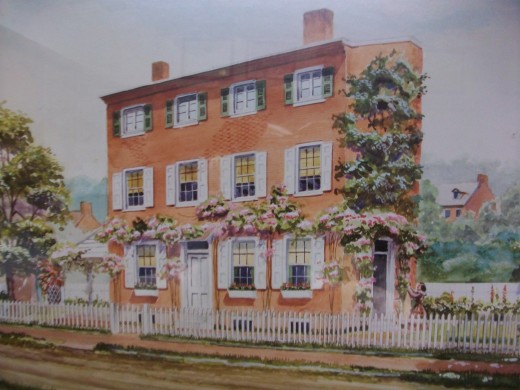
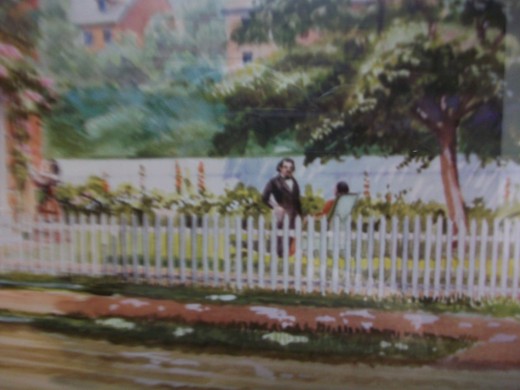
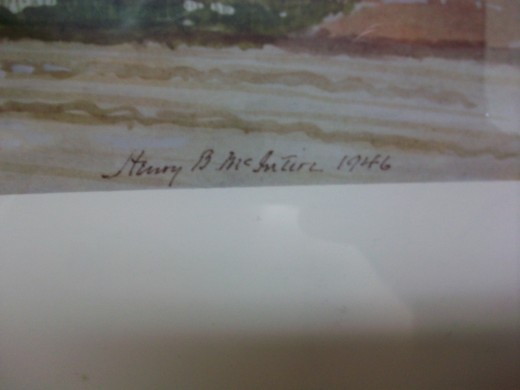
The Raven Painting at the Poe House
